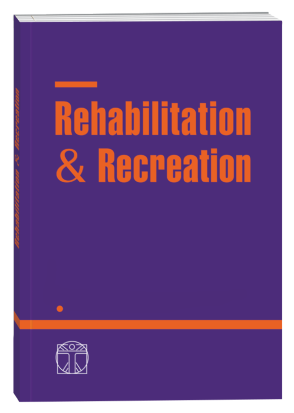EVIDENCE OF PHYSICAL REHABILITATION IN CHILDREN CEREBRAL PALSY
Keywords:
cerebral palsy, physical rehabilitation, evidence-based medicine, Vojta-therapy, Bobath-therapy, massage, orthoses.Abstract
Тhis article analyzes the methods of physical therapy in general
and in particular children with cerebral palsy. The objectives of the research was to
study the literature on research; explore methods of reliable studies; determine on
the basis of review of evidence-based medicine effective methods of physical
rehabilitation in infantile cerebral paralysis. During the research funds were
processed online resource Cochrane Library and PubMed, specialized database of
evidence-based medicine physical rehabilitation - PEDro. Due to work on the
study highlights the problem of reliability of process efficiency correction
copyright techniques; considered optimize the quality of rehabilitative care; studied
the degree of evidence of different types of clinical interventions and strategies
support the rehabilitation of the patient.
References
Botulinum toxin A as an adjunct to treatment in the management of the upper limb in children with spastic cerebral palsy (UPDATE) Published Online: 20 JAN 2010. 2. Botulinum toxin type A and serial casting versus botulinum toxin type A or serial casting in treating equinus gait of children with cerebral palsy Published Online: 16 JUL 2008. 3. Complementary and alternative therapies for cerebral palsy Mental Retardation and Developmental Disabilities Research Reviews Volume 11, Issue 2, pages 156-163, April 2005. 4. Darrah PhD, Watkins PT, Chen PT, Bonin PT. Conductive education intervention for children with cerebral palsy: an AACPDM evidence report Developmental Medicine & Child Neurology Volume 46, Issue 3, pages 187-203, March 2004. 5. DeLuca SC, Case-Smith J, Stevenson R, Ramey SL. Constraint-induced movement therapy (CIMT) for young children with cerebral palsy: effects of therapeutic dosage. J Pe- diatr Rehabil Med. 2012;5(2):133-42. 6. Dodd KJ, Shields N. A systematic review of the effectiveness of treadmill training for children with cerebral palsy. Disabil Re- habil. 2009;31(24). 7. Effects of neurodevelopmental treatment (NDT) for cerebral palsy: an AACPDM evidence report Developmental Medicine & Child Neurology Neurology Developmental Medicine & Child Neurology / Volume / Issue 11 / November 2001, pp 778-790. 8. Karen J. Dodd, PhD, Nicholas F. Taylor, PhD, Diane L. Damiano, PhD. A systematic review of the effectiveness of strength-training programs for people with cerebral palsy, Volume 83, Issue 8, August 2002, Pages 1157-1164. 9. Massage for cerebral palsy Peninsula Cerebra Research Unit, Feb 2013.
Prevention of cerebral palsy in motor risk infants by treatment ad modum Vojta: A Controlled Study Acta Paediatrica Volume 69, Issue 3, pages 283-286, May 1980. 11. Stavness C. The effect of positioning for children with cerebral palsy on upper- extremity function: a review of the evidence. Phys Occup Ther Pediatr. 2006;26(3):39-53. 12. Zadnikar M, Kastrin A. Effects of hip- potherapy and therapeutic horseback riding on postural control or balance in children with cerebral palsy: a meta-analysis, Developmental Medicine and Child Neurolo- gy.2011;53(8):684-691.











